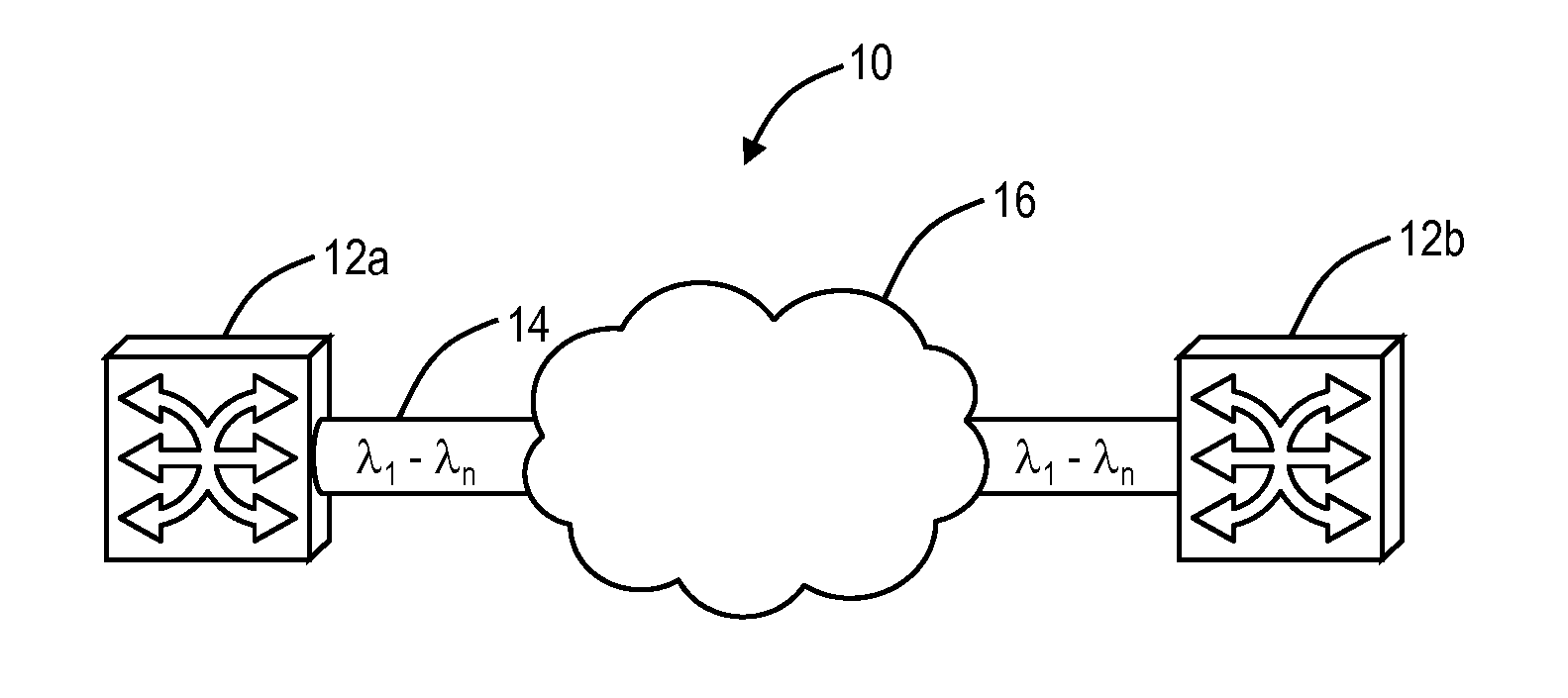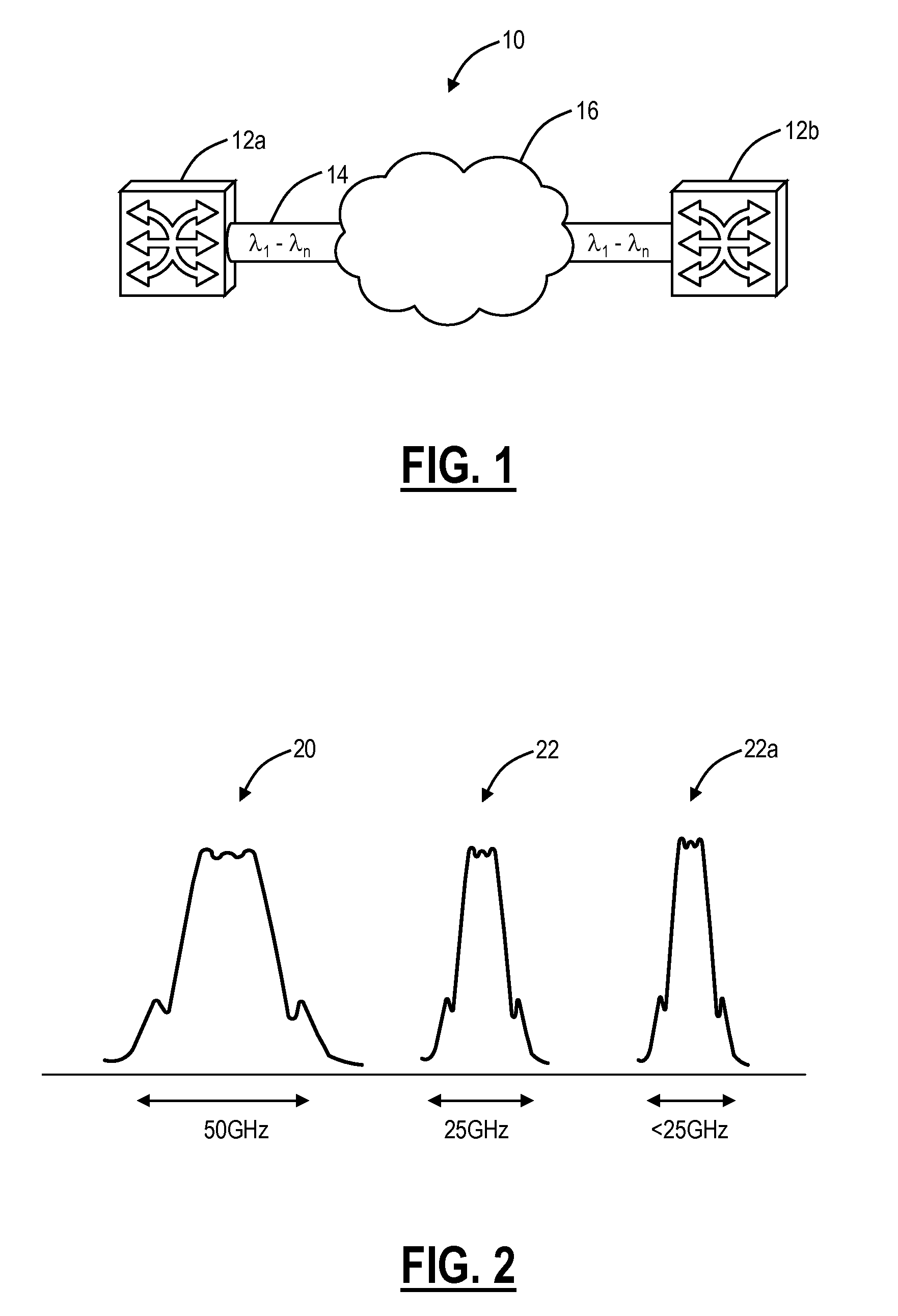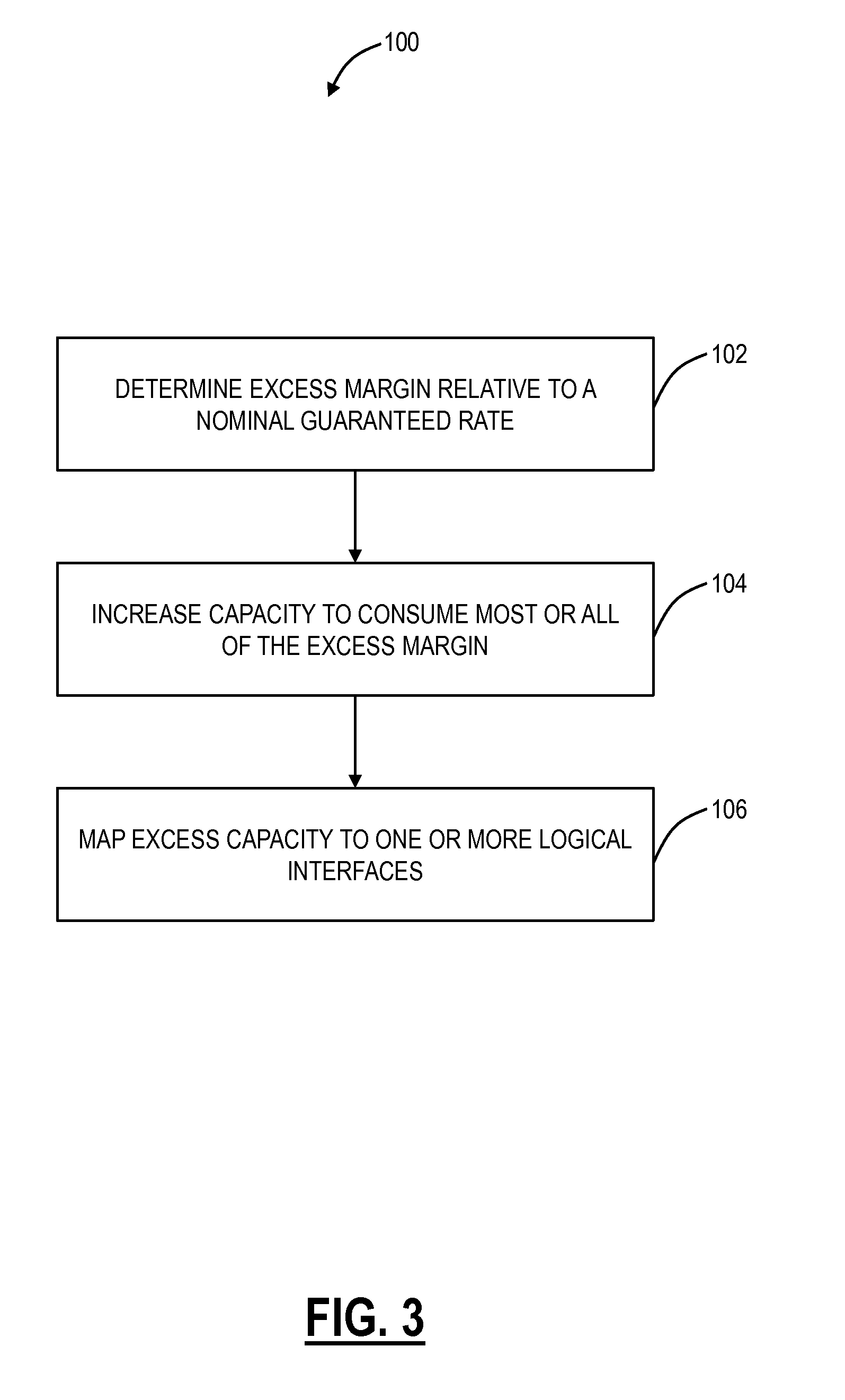Systems and methods for managing excess optical capacity and margin in optical networks
a technology of optical network and excess capacity, applied in the field of optical network, can solve the problems of forcing the system to operate in a non-cost effective way, unused margin can be considered wasted, and the performance limits of these channels are established, so as to minimize the interruption of the associated underlying connection
- Summary
- Abstract
- Description
- Claims
- Application Information
AI Technical Summary
Benefits of technology
Problems solved by technology
Method used
Image
Examples
Embodiment Construction
[0041]In various exemplary embodiments, hitless modulation scheme change systems and methods in optical networks are described. The hitless modulation scheme change systems and methods allow modulation scheme changes of a transponder in a hitless manner so as to reap the benefit of changing the spectral efficiency to match link and system level requirements. The hitless modulation scheme change systems and methods provide a bottom-up approach and autonomous approach that negotiates a modulation change when one is warranted and ensures that existing traffic is not impacted during the modulation change. Due to the complex nature of high-speed optical transmission (e.g., coherent modulation, adaptive electrical signal processing, Forward Error Correction (FEC), etc.), it is extremely complex to switch a transponder or modem's modulation without impacting traffic. In this manner, the hitless modulation scheme change systems and methods propose an approach using a mechanism which coordin...
PUM
 Login to View More
Login to View More Abstract
Description
Claims
Application Information
 Login to View More
Login to View More - R&D
- Intellectual Property
- Life Sciences
- Materials
- Tech Scout
- Unparalleled Data Quality
- Higher Quality Content
- 60% Fewer Hallucinations
Browse by: Latest US Patents, China's latest patents, Technical Efficacy Thesaurus, Application Domain, Technology Topic, Popular Technical Reports.
© 2025 PatSnap. All rights reserved.Legal|Privacy policy|Modern Slavery Act Transparency Statement|Sitemap|About US| Contact US: help@patsnap.com



